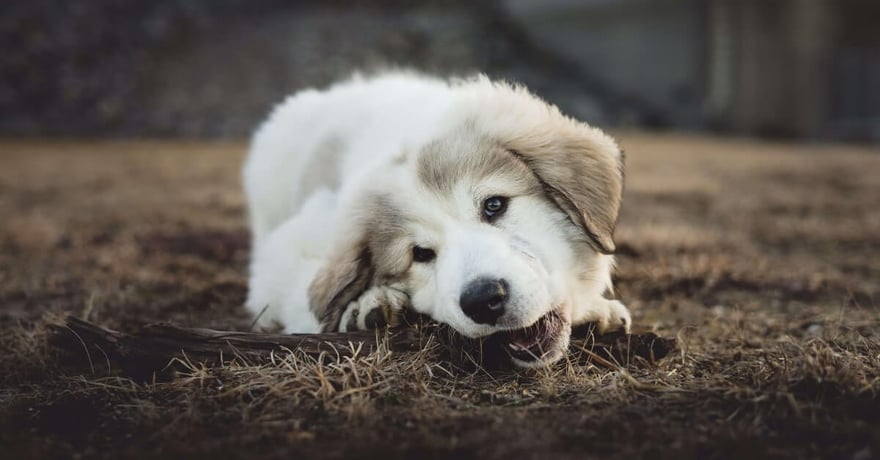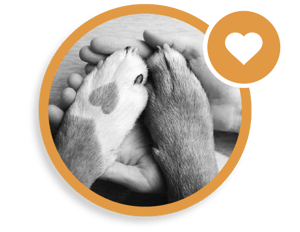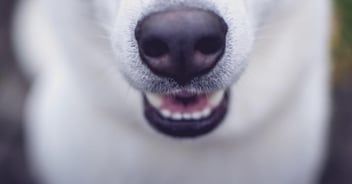How to Find The Best Chew Toys for Dogs

Dogs and puppies love to gnaw and chew on things — it’s a big part of their nature and it can also help them to maintain a healthy mouth. However, finding the right chew toy for your pooch is a little easier said than done, with more opinions on what’s safe and what’s not than ever. Along with safety, you also have to consider durability, value for money, and your dog’s enjoyment, so finding the right toys can be confusing.
Are rope toys safe for dogs? How many chew toys should a dog have? Can you still throw a dog a bone? This article will answer those questions and more.
Choose for Your Dog Specifically
There are various factors that you should always consider when getting your dog chew toys.
Age of dog
One of the major aspects of shopping for safe dog chew toys is taking your dog’s age into consideration. A teething puppy will benefit from gentler toys, while a dog in its prime might want something a little more substantial, and older dogs will need something in between.
It’s also worth noting that to keep a puppy entertained, you should keep around 10-15 toys in the house. This will not only give them more options for play but will help you to retain the toys for longer periods of time.
Size of dog
Beyond age, you also need to shop according to the size of your dog. The best chews for puppies and smaller dogs will of course be smaller and perhaps a little less dense, but a larger dog is at risk of swallowing toys like this, so make sure to choose something suitable in size.
Chewing style
Along with their size and age, your dog’s compatibility and safety with different chew toys will depend on the way that they chew things, which you can discern through trial and error. It’s generally accepted that there are 3 main different forms of chewers in dogs, and each of these chewing styles is better suited to a different type of chew toy.
- Gentle Nibblers: These dogs aren’t the kind to go too hard on their toys, opting to suck and nibble on them gently. Softer toys are well-suited to these kinds of dogs, and you can expect that said toys will last a decent amount of time.
- Average Chewers: These kinds of dogs are pretty well-suited to most forms of chewing toys, being the most common type of chewer among dogs. They can be seen carrying toys around with them, but softer toys may still end up destroyed.
- Powerful Chewers: Toys will likely end up destroyed when left between the jaws of these chewers, which means choosing the safest option is especially integral to ensure no accidental swallowing takes place. Perhaps pick a size up from the usual size recommended for them.
Along with the vigour of your dog's chewing, you also need to consider their broader tendencies when it comes to chewing. Might they try to eat any dislodged parts of a toy or just gnaw on them? Even average chewers may need more specific toys if they have a tendency to inhale whatever’s in their mouth.
Potentially Unsafe Dog Chew Toys
While every dog is different, there are plenty of dog chew toys that you should avoid in general for the sake of their safety. Note that some of these should always be avoided, while others can be used but only with supervision. Consult further with your veterinarian if you have specific questions related to your pet.
- Rawhide: Rawhide can be a controversial topic. It can cause a choking and blockage risk, chip teeth and is very difficult for a dog to digest as it is made from a cow's skin (the inner part). Many times, rawhide will travel through a dog undigested. This can also make choosing a rawhide option difficult. Too big and it can crack teeth - too small and it can present a choking or obstruction risk if swallowed.
- Ice cubes: Exercise some caution here. Ice cubes can be hard enough to break teeth and can also pose a choking-risk to your dog.
- Tennis Balls: You can throw a tennis ball back and forth between yourself and a smaller dog, but a larger, more aggressive chewers could destroy and swallow pieces of it.
- Tug Ropes: These toys can be fine for use with some caution, but they're made of long fibres that can easily end up being ingested by your dog. These pose a risk of causing an intestinal obstruction.
- Bones: While giving dogs bones is classic, they’re not considered completely safe. All bones can splinter. Overly large bones can damage teeth and smaller bones (like turkey, chicken, and rib) pose a significant risk of splintering and should never be given to your pet.
Safest Chews for Dogs (by Chewing Style)
So with all this in mind, what types of dog toys are safe for different chewers? Below, we have listed some suitable toys and the chewers they’re most compatible with.
- Rubber Toys - Suitable for Most Dogs: Strong and durable rubber toys are generally safe for most dogs and chewing styles — just make sure to choose the right size and replace them when they become a little too dog-eared (see what we did there?).
- Dental Chews - Suitable for Powerful Chewers: If your dog is a powerful chewer, maybe consider bypassing toys altogether and going for something semi-edible like Dentastix. They won’t last very long, but you can be confident that they’ll be safe and satisfying.
- Stuffed Toys - Suitable for Gentle Nibblers: A stuffed dog toy shouldn't damage your dog’s teeth, but it’s worth noting that a stronger chewer can easily destroy one of these and ingest some of the stuffing, so it’s best to leave them to the gentler, smaller dogs.
What Now?
Now that you understand how to search for a dog chew, it’s time to get looking! There are plenty of blogs online with options better suited for aggressive chewers, while others are perfect for puppies.
Remember that regardless of the chew toy that you choose, every dog (and cat) owner should consider pet insurance, so you’ll have a contingency plan in place, should the worst happen. Get a pet insurance quote for your pet from PHI Direct to discover more.
Posted on June 20, 2022 | Categories: Health DOGS Puppy
Share


